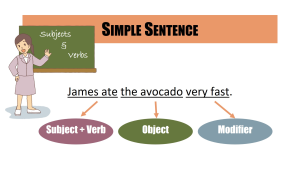What is College Writing?
Greg Hartley

College writing is . . .
- Formal: It follows an agreed-upon set of rules that help create communication.
- Scholarly: It uses information from established scholars and always gives credit to those sources.
- Professional: It adheres to common standards for English grammar and spelling, avoiding slang, clichés, and alternate spellings. This doesn’t mean college writing can’t be personal, but it should always be professional first!
The Structure of a College Essay
The Idea of an Essay
An essay carries meaning in five major channels:
- The Message – The basic meaning of any essay is simply what you have to say. Sounds easy, but you have to know your message before you begin. One common mistake is to just start writing with the expectation that great ideas will simply emerge. We call that freewriting, and it can be helpful, but often good ideas take time to develop.
- The Organization – Just as words in a sentence must appear in order if anyone is to understand them. The same is true for essays. If we release ideas to flow in any order, the result can be chaotic and incomprehensible. Instead, the best plan is to plan! Capture your ideas and get them in an order that makes sense to you.
- The Personality – Also called your writing style, the ingredient in your writing that is uniquely you is just as important as any other part of your meaning. No one can express your ideas in quite the same way you can, which helps break up the old myth that professional writers can say things better than you. Style is so important that it gets an entire section of this textbook.
- The Mechanics – This channel is what most people think about (and dread) when they think about a writing class. It includes spelling, capitalization, punctuation, and grammar. If you felt a twinge of stress from reading that list, you’re not alone! Most people find mechanics stressful and use their low grammar confidence to claim that they are “bad at writing.” But that’s almost never the case! If you made it into this class, you are fluent in English! That means the mechanics already work naturally for you. So we won’t worry too much about them. In fact, this textbook has no grammar lessons! Isn’t that nice?
- The Format – Also called formal style, this feature makes college writing scholarly writing. Format refers to the system of referencing, citing, and listing outside sources written by other scholars. It also deals with how the physical document is set up, including margins, spacing, font, headers, footers, and more. Formal Style usually gets managed by professional organizations. Famous examples include MLA (the Modern Language Association), APA (the American Psychological Association), and CMS (the Chicago Manual of Style). This class will rely on MLA because it’s often considered the easiest to use.
The Parts of a College Essay:
Take a moment to examine the chart below. It shows how all language, writing in particular, gets organized in use.
Basic Writing Structures: How Language is Organized
- The Complete Sentence
- Subject
- Verb
- The Unified Paragraph
- Topic Sentence
- Supporting Sentence
- Transitional Sentence
- The Unified Essay
- Thesis Statement
- Main Points
- Supporting Paragraphs
- Works Cited
- Author
- Title
- Publisher
- Date
- Location
The Complete Sentence

The first of these structures, the complete sentence, should come pretty naturally to you, so we will only offer a brief definition.
A complete sentence contains both a subject and a verb. The simplest complete sentences contain only a subject and a verb:
- I went.
- He drives.
- We ate.
But sentences can become much more complex than that. The only reminder is to make sure all of your sentences still have a subject and verb, no matter how long (or short) they are!
The Unified Paragraph
Most people know that a paragraph begins with either an indentation or a line break, but fewer realize why a new paragraph should appear! As a result, inexperienced writers will sometimes make their first paragraph the essay’s only paragraph. But a well-designed paragraph has parts just like a well-written sentence does. The first part is the topic sentence.
Look at the paragraph below.
Source: Munro, Kelsey. “How Safe is Flying? Here’s What the Statistics Say,” SBS News, July 31, 2018.
The first sentence, in bold print, makes a claim. That is the function of a paragraph’s topic sentence: to make a claim readers should eventually accept as true. But for readers to accept the claim, the writer must do more than simply assert how right they are. They must provide evidence that supports the truth of the claim. That’s what the rest of the paragraph does. After the topic sentence, each remaining sentence provides data that shows just how safe flying is, supporting the claim that flying is safe.
This pattern of claim followed by support forms the structure of all paragraphs. Making a habit of using this pattern consistently is possibly the most important step in becoming a skilled college-level writer.
A statement made by a writer intended to be accepted as true by readers. A writer must provide evidence to support the claim.

